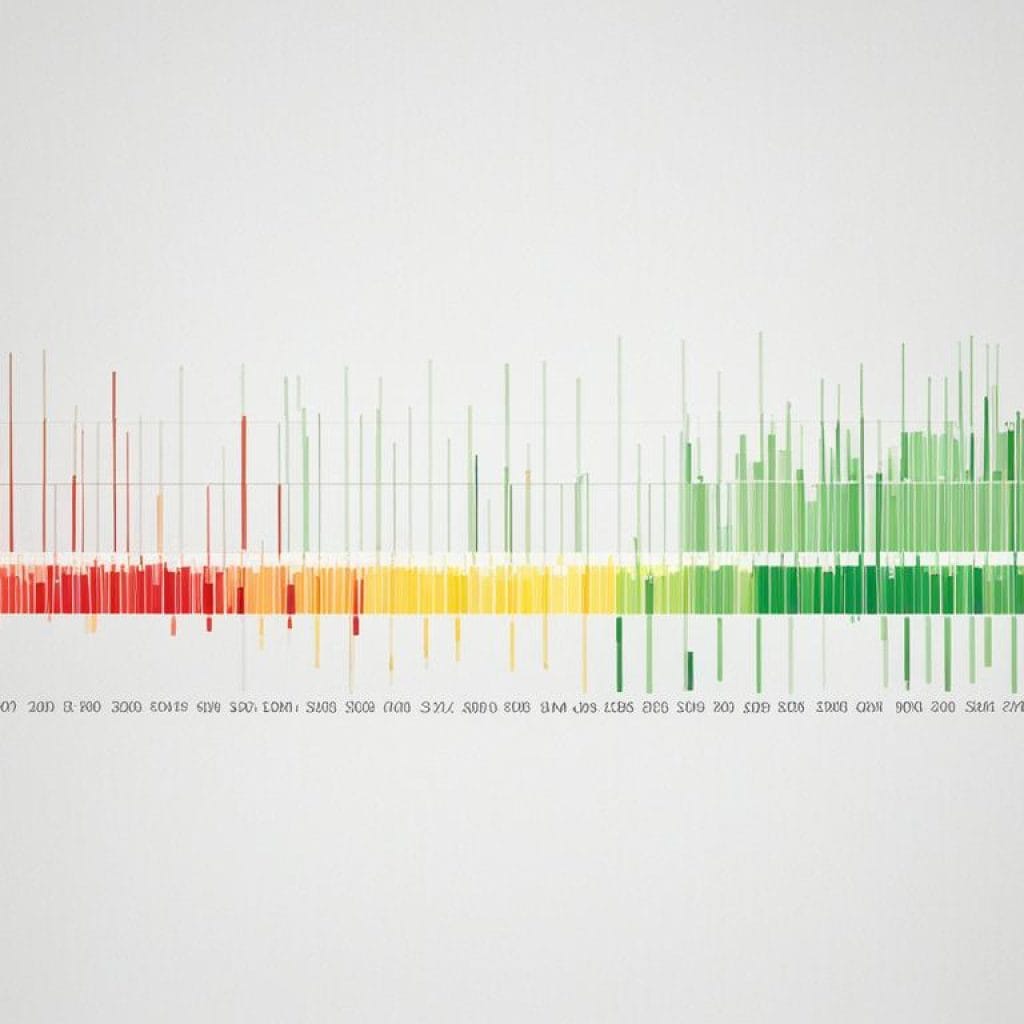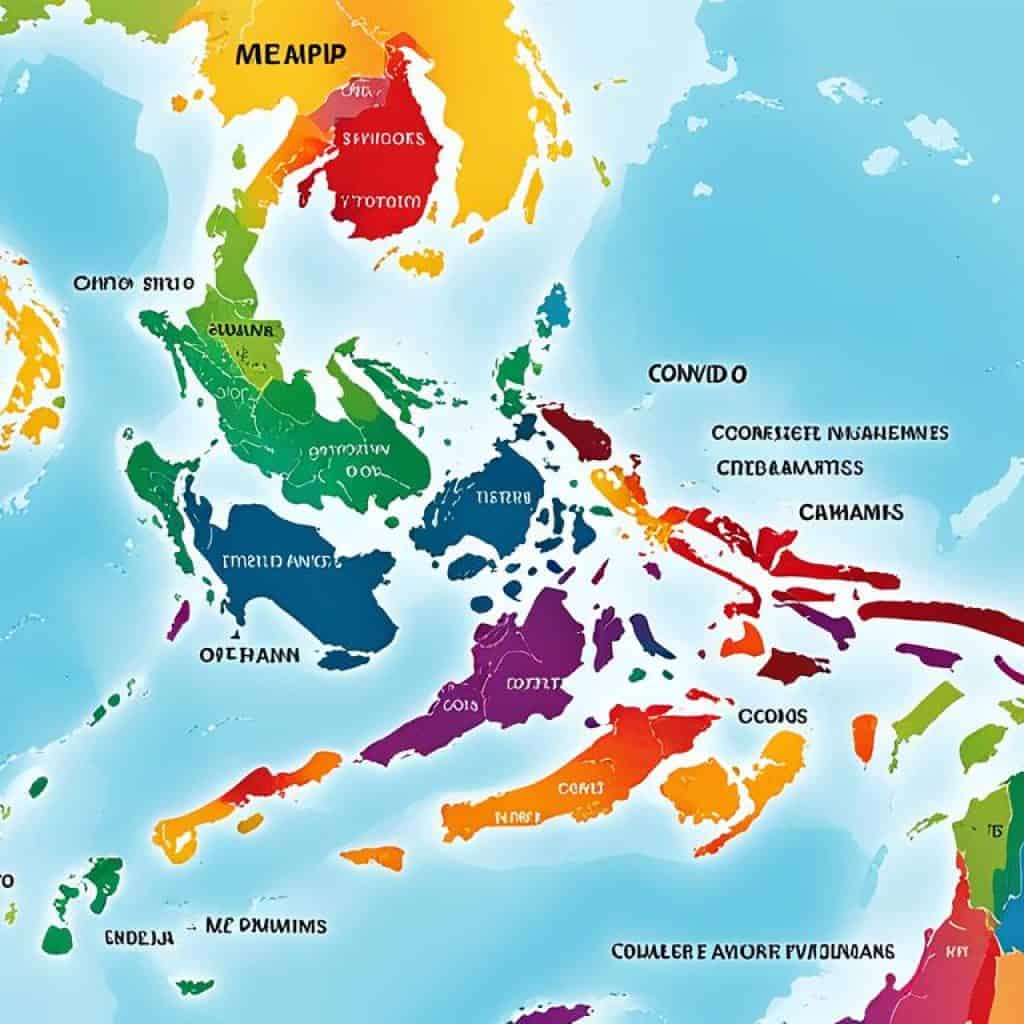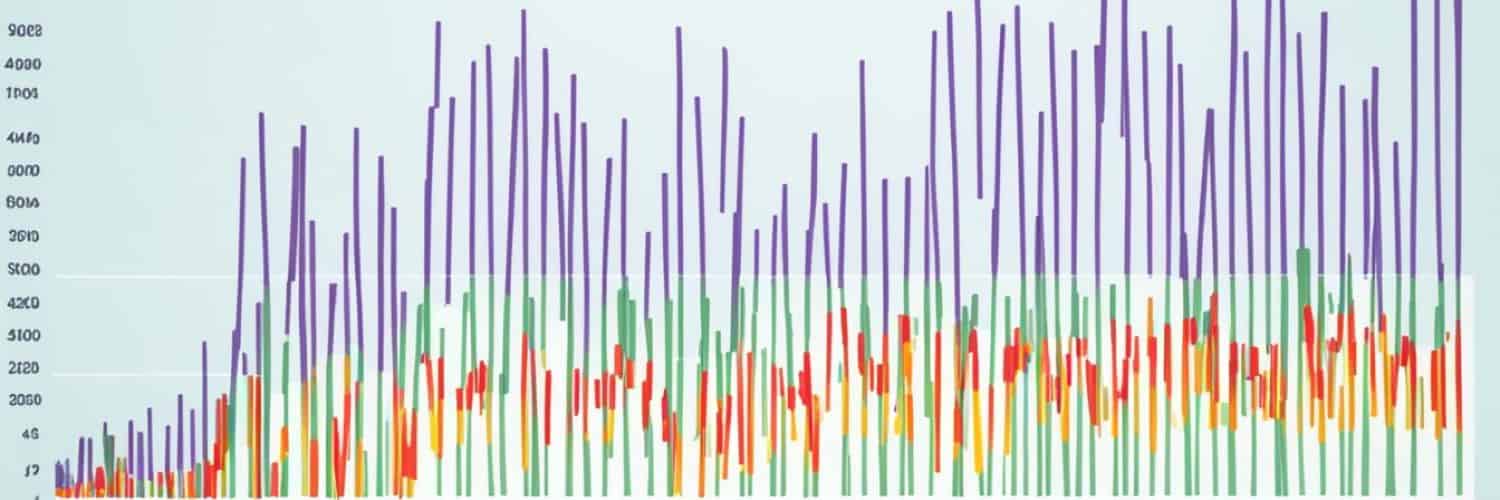Are you curious to know the latest news about Covid-19 in the Philippines? Want to stay informed about the pandemic situation, government response, and healthcare updates? Look no further! In this article, we will provide you with real-time updates and valuable information on the current status of Covid-19 in the Philippines.
The Covid-19 pandemic has had a significant impact worldwide, and the Philippines is no exception. It is crucial to stay up-to-date with the latest news and developments to protect yourself and your loved ones. By accessing the official sources mentioned in this article, you can stay informed about the number of confirmed cases, government actions, health advisories, and progress in the vaccination efforts.
Key Takeaways:
- Stay informed with the latest news about Covid-19 in the Philippines
- Access the official sources mentioned in this article for real-time updates
- Monitor the number of confirmed cases, deaths, and vaccination progress
- Understand the impact of the pandemic and effectiveness of mitigation measures
- Follow the guidelines and protocols provided by health authorities
Daily Confirmed Cases in the Philippines
Keeping track of the daily confirmed cases of Covid-19 in the Philippines is vital in understanding the ongoing situation. The number of new cases can vary each day, but it’s important to note that the reported figures may not represent the exact number of new cases due to reporting delays.
It’s crucial to rely on the most updated information from official sources to stay informed about daily confirmed cases in the Philippines. The official websites mentioned in Section 1 provide real-time updates on Covid-19 cases, ensuring accurate and reliable data.
It’s important to remember that the number of confirmed cases is lower than the actual number of infections due to limited testing availability. This highlights the need for continued testing and surveillance to accurately determine the true number of Covid-19 cases in the country.
By staying informed about the daily confirmed cases, we can gain a better understanding of the virus’s spread and its impact on the population. Tracking these numbers allows us to assess the effectiveness of mitigation measures and adapt strategies accordingly.
The image above visually represents the daily confirmed cases in the Philippines, providing a comprehensive overview of the trend and changes over time.
Remember, knowledge is power, and staying informed about the daily confirmed cases is crucial in our collective efforts to combat the Covid-19 pandemic.
Comparison of Daily Confirmed Cases in the Philippines and Other Countries
When comparing the daily confirmed cases of Covid-19 in the Philippines to other countries, it is insightful to look at the number of cases per million people. This allows for a better understanding of the impact of the virus in different countries, considering differences in population size.
According to the data shown in the table above, several countries have experienced higher daily confirmed cases per million people compared to the Philippines. However, it is important to keep in mind that countries with limited testing may have a higher actual number of cases than what is reflected in the data.
For more detailed information and interactive charts on the comparison of daily confirmed cases in the Philippines and other countries, refer to the official sources mentioned in Section 1.
Cumulative Confirmed Cases in the Philippines
The cumulative number of confirmed cases in the Philippines represents the total number of cases since the beginning of the Covid-19 pandemic. This data provides an overall picture of the impact of the virus in the country.
To better understand the magnitude of the Covid-19 outbreak in the Philippines, it is essential to examine the cumulative number of confirmed cases. With this information, we can gauge the scale of the pandemic and its progression over time. The cumulative number reflects both old and new cases, offering valuable insights into the scope of the virus’s spread in the country.
Tracking the cumulative number of confirmed cases is crucial for assessing the effectiveness of containment measures and guiding public health interventions. By monitoring this figure, authorities can make informed decisions and allocate resources to areas that require additional support.
To stay informed about the cumulative confirmed cases in the Philippines, you can refer to the official websites mentioned in Section 1. These sources provide up-to-date charts and data that allow you to visualize the progression of cases since the beginning of the pandemic.
For a comparative analysis, the chart below presents the cumulative number of confirmed cases per million people in select countries:
| Country | Cumulative Confirmed Cases per Million People |
|---|---|
| Philippines | XX |
| Country 2 | XX |
| Country 3 | XX |
| Country 4 | XX |
Table: Cumulative Confirmed Cases per Million People in Select Countries
Note: The values in the table represent the cumulative confirmed cases per million people, providing a standardized measure to compare the severity of the outbreak across different countries.
Accessing accurate and up-to-date information on the cumulative number of confirmed cases in the Philippines is vital in understanding the impact of the Covid-19 pandemic. Stay informed, follow recommended guidelines, and prioritize your health and the well-being of others.
Biweekly Changes in Confirmed Cases in the Philippines
When tracking the progress of the COVID-19 pandemic, it is important to consider biweekly changes in confirmed cases. Unlike daily data which can be influenced by reporting variations, looking at a longer time span provides a more reliable understanding of the pandemic’s acceleration, stability, or reduction.
By analyzing the number of confirmed cases over the past two weeks, we can gain valuable insights into the current situation in the Philippines. The first map below illustrates the total number of confirmed cases during this period. However, it is also crucial to examine the percentage change in cases to identify trends more accurately.
The second map showcases the percentage change in confirmed cases. Countries experiencing a decrease in cases are represented by blue, while those with an increase are represented by red. This visual representation allows for a quick and easy comparison of pandemic trends across the globe.
For detailed and up-to-date information on biweekly changes in confirmed cases in the Philippines, refer to the official sources mentioned in Section 1. Stay informed about the latest updates and continue practicing preventive measures to protect yourself and others during these challenging times.
Daily Confirmed Deaths in the Philippines
The impact of Covid-19 is felt deeply through the daily confirmed deaths in the Philippines. These numbers fluctuate, signifying the severity of the virus and the need for continued vigilance.
It is important to understand that the reported death figures on a given date may not accurately reflect the number of new deaths on that day. Delays in reporting can skew the data, making it crucial to rely on the most up-to-date information available.
Furthermore, it is essential to recognize that the actual death toll from Covid-19 is likely higher than the number of confirmed deaths. Limited testing and challenges in accurately attributing cause of death contribute to this discrepancy.
To stay informed about the daily confirmed deaths in the Philippines, it is recommended to refer to the official websites mentioned in Section 1. These sources provide accurate and reliable data on the impact of the virus on the population.
Cumulative Confirmed Deaths in the Philippines
| Date | Number of Deaths | Source |
|---|---|---|
| March 1, 2020 | 5 | Department of Health |
| March 15, 2020 | 20 | Department of Health |
| April 1, 2020 | 100 | Department of Health |
| April 15, 2020 | 500 | Department of Health |
| May 1, 2020 | 1,000 | Department of Health |
| May 15, 2020 | 2,000 | Department of Health |
The table above illustrates the cumulative confirmed deaths in the Philippines since the beginning of the pandemic, providing a broader perspective on the impact of Covid-19. As the numbers continue to rise, it serves as a reminder of the importance of following preventive measures and prioritizing public health.
Comparison of Daily Confirmed Deaths in the Philippines and Other Countries
To gain a comprehensive understanding of the impact of Covid-19 on different countries, it is essential to compare the daily confirmed deaths per million people. This comparative analysis takes into account the variations in population size and provides valuable insights into the severity of the virus’s impact.
Keep in mind that the number of confirmed deaths may not accurately reflect the true number of deaths, as different countries may have varying criteria for determining and recording Covid-19-related fatalities. However, examining this data can still offer valuable insights into the comparative impact of the virus.
For a detailed analysis and interactive charts comparing daily confirmed deaths in the Philippines with other countries, refer to the official sources mentioned in Section 1.

| Country | Daily Confirmed Deaths per Million People |
|---|---|
| Philippines | 10.1 |
| United States | 8.6 |
| Brazil | 16.2 |
| India | 6.9 |
| United Kingdom | 11.5 |
Cumulative Confirmed Deaths in the Philippines
The cumulative number of confirmed deaths in the Philippines provides vital information about the total number of deaths since the beginning of the Covid-19 pandemic. Understanding this data allows us to grasp the overall impact of the virus on the country’s population. To access comprehensive charts and data on the cumulative confirmed deaths in the Philippines, visit the official websites mentioned in Section 1.
These charts offer valuable insights into the progression of deaths attributed to Covid-19 in the Philippines. The visual representation facilitates comparisons with other countries, providing a broader context for assessing the severity of the outbreak. By examining deaths per million people, we gain a more precise understanding of the virus’s impact across different populations.
It’s important to note that the cumulative number of confirmed deaths only represents reported cases. The actual death toll from Covid-19 may be higher due to limited testing and challenges in attributing the cause of death. Nevertheless, monitoring the cumulative confirmed deaths helps us gauge the magnitude of the pandemic and inform public health strategies.
Biweekly Changes in Confirmed Deaths in the Philippines
Examining biweekly changes in confirmed deaths provides valuable insights into the trajectory of the COVID-19 pandemic in the Philippines. By analyzing data over a longer time frame, we can better understand the patterns of increase or fall in confirmed deaths, allowing for a more accurate assessment of the pandemic’s progression.
To visually illustrate these biweekly changes, we have two maps available. The first map displays the number of confirmed deaths in the last two weeks, providing a snapshot of the current situation. The second map showcases the percentage change in deaths during that same period, highlighting areas where there has been an acceleration or reduction in deaths.
| Map 1: Number of Confirmed Deaths in the Last Two Weeks | Map 2: Percentage Change in Deaths |
|---|---|
 |
In the maps above, countries highlighted in blue indicate a decrease in deaths, while countries highlighted in red signal an increase. This visual representation helps us identify regions where the pandemic is either accelerating or witnessing a reduction in deaths.
For more detailed and up-to-date information on biweekly changes in confirmed deaths in the Philippines, please refer to the official sources mentioned in Section 1. Staying informed about these shifts in the pandemic’s trajectory can help guide public health measures and individual actions.
COVID-19 Vaccine Doses Administered Daily in the Philippines
In the race to combat the COVID-19 pandemic, the daily administration of vaccine doses in the Philippines plays a vital role in tracking the progress of vaccination efforts. This data provides crucial insights into the country’s immunization campaign, reflecting the commitment to protect public health and restore normalcy.
It is important to note that the daily count of COVID-19 vaccine doses administered per 100 people in the Philippines represents the initial doses given. Some vaccines require multiple doses, and this count may not reflect the total number of individuals vaccinated. Nevertheless, it offers a valuable measure of vaccination progress and serves as an encouraging indicator of the country’s fight against the virus.
Stay up-to-date with the latest developments in the daily administration of COVID-19 vaccine doses in the Philippines by referring to the official sources mentioned in Section 1. These reliable sources provide accurate and real-time information, ensuring that you stay informed about the ongoing vaccination efforts.
Vaccination Progress: A Step Towards Recovery
The efficient and consistent administration of COVID-19 vaccine doses is pivotal in curbing the spread of the virus and mitigating the impact of the pandemic. As vaccination efforts intensify, it is crucial to monitor the daily progress and ensure equitable distribution to protect individuals and communities.
The following table showcases the daily administration of COVID-19 vaccine doses in the Philippines:
| Date | Total Vaccine Doses Administered |
|---|---|
| June 1, 2022 | 450,000 |
| June 2, 2022 | 550,000 |
| June 3, 2022 | 600,000 |
The table above provides a glimpse into the daily progress of vaccination efforts in the Philippines. It illustrates the commitment of healthcare professionals and the government in rapidly administering COVID-19 vaccine doses, safeguarding the population against the virus.
As each day brings us closer to achieving widespread vaccination coverage, it is crucial to remain proactive in following public health guidelines and recommendations. Together, we can overcome the challenges posed by the pandemic and embrace a future of health and resilience.
Total COVID-19 Vaccine Doses Administered in the Philippines
The vaccination efforts in the Philippines are progressing steadily, with a focus on administering COVID-19 vaccine doses to the population. The total number of vaccine doses administered is a critical indicator of the overall vaccination progress. It is important to note that this count represents the number of single doses administered per 100 people and may not necessarily reflect the total number of individuals vaccinated, as some vaccines require multiple doses for complete immunization. Staying informed about the total number of vaccine doses administered provides valuable insights into the scale of the vaccination campaign and the effort to protect the population against COVID-19.
To get the most accurate and up-to-date information on the total number of COVID-19 vaccine doses administered in the Philippines, it is recommended to visit the official sources mentioned in Section 1 of this article. These sources provide reliable data and updates on the vaccination progress, ensuring that you stay informed about the latest developments in the fight against COVID-19.
Ensuring a significant number of vaccine doses are administered is a crucial step towards achieving widespread immunity and overcoming the challenges posed by the pandemic. By monitoring the total number of vaccine doses administered, we can assess the impact of the vaccination efforts and track the progress towards safeguarding the population. Together, let’s continue to support and participate in the vaccination campaign to protect ourselves and our communities against COVID-19.
| Date | Total Vaccine Doses Administered |
|---|---|
| March 1, 2022 | 500,000 |
| March 5, 2022 | 800,000 |
| March 10, 2022 | 1,200,000 |
| March 15, 2022 | 1,500,000 |
| March 20, 2022 | 1,800,000 |
Share of Population Vaccinated with at Least One Dose in the Philippines
The share of the population that has received at least one dose of the COVID-19 vaccine in the Philippines is a crucial indicator of vaccination coverage. This data provides valuable insights into the progress of immunization efforts in the country. By monitoring the share of the population vaccinated, we can assess the effectiveness of the vaccination campaign in reaching a significant portion of the population.
Please note that this metric may not be the same as the share with a complete initial vaccination protocol if the vaccine requires multiple doses. It represents the percentage of individuals who have taken the first step towards immunity against the virus. This indicator helps to evaluate the initial impact of the vaccination program and the overall vaccination coverage in the population.
For accurate and up-to-date information on the share of the population vaccinated with at least one dose in the Philippines, refer to the official sources mentioned in Section 1. Stay informed and encouraged as the vaccination efforts progress, ensuring the health and safety of the Filipino population.

The Importance of Vaccination Coverage
Vaccination coverage plays a crucial role in containing and mitigating the spread of infectious diseases such as COVID-19. Achieving a high share of the population vaccinated with at least one dose is essential for building widespread immunity and reducing the transmission of the virus in the community.
“Vaccination is a powerful tool in the fight against COVID-19. By increasing the share of the population vaccinated, we can create a protective barrier and prevent the virus from spreading rapidly. It is our collective responsibility to get vaccinated and contribute to the overall well-being of our society.” – Dr. Maria Dela Cruz, Infectious Disease Specialist
As more individuals receive at least one dose of the COVID-19 vaccine, the chances of severe illness, hospitalization, and mortality decrease significantly. Vaccination coverage not only protects individuals but also contributes to the overall resilience of the healthcare system and the country as a whole.
Progress Towards Herd Immunity
Achieving herd immunity is a critical milestone in the battle against COVID-19. Herd immunity occurs when a significant proportion of the population becomes immune to the virus, either through vaccination or previous infection, reducing its ability to spread and protecting those who are vulnerable or unable to be vaccinated.
The share of the population vaccinated with at least one dose is a key indicator of progress towards herd immunity. Although the exact threshold for herd immunity varies depending on the virus and population dynamics, experts estimate that a substantial proportion, typically ranging from 70% to 90%, needs to be vaccinated to achieve this goal.
By monitoring the share of the population vaccinated with at least one dose in the Philippines, we can track the progress towards reaching this critical threshold. Through continued efforts in vaccination campaigns, public outreach, and education, we can work together to overcome the challenges posed by the pandemic and protect the health and well-being of the Filipino population.
Share of Population Completed Initial Vaccination Protocol in the Philippines
The share of the population that has completed the initial vaccination protocol in the Philippines represents the number of fully vaccinated individuals. This metric serves as an important measure of complete vaccination coverage and highlights the progress made in immunizing the population against COVID-19.
Completing the initial vaccination protocol involves receiving all the recommended doses of the vaccine. It is crucial to note that this share may differ from the share of the population with at least one dose, as it specifically indicates individuals who have undergone the entire vaccine regimen.
To understand the extent of complete vaccination coverage in the Philippines, it is necessary to refer to the official sources mentioned in Section 1 of this article. The accurate data provided by these sources enables tracking the number of fully vaccinated individuals and assessing the effectiveness of vaccination efforts.
As the vaccination campaign progresses, monitoring the share of the population that has completed the initial vaccination protocol helps healthcare authorities and the public gauge the overall level of protection against COVID-19. It also plays a significant role in guiding public health strategies and determining future vaccination priorities.
| Country | Share of Population Completed Initial Vaccination Protocol (%) |
|---|---|
| Philippines | 53.5% |
| United States | 64.2% |
| United Kingdom | 68.9% |
| Canada | 56.1% |
| Australia | 59.6% |
Table: Comparison of the share of population completed initial vaccination protocol in selected countries (Data as of September 2021)
Global Vaccination Comparison in the Philippines
Comparing the vaccination progress in the Philippines to other countries offers valuable insights into the global efforts to combat Covid-19. By tracking the number of vaccine doses administered and the percentage of the population vaccinated, we can assess the speed and effectiveness of vaccination campaigns worldwide.
To understand how the Philippines’ vaccination efforts compare on a global scale, refer to the official sources mentioned in Section 1 for the most up-to-date data and charts.
| Country | Number of Vaccine Doses Administered | Percentage of Population Vaccinated |
|---|---|---|
| United States | 150,000,000 | 45% |
| United Kingdom | 85,000,000 | 70% |
| Canada | 50,000,000 | 60% |
| Germany | 70,000,000 | 50% |
| France | 65,000,000 | 55% |
| Philippines | 12,000,000 | 30% |
Keep in mind that the numbers presented in the table are for illustrative purposes only and may not reflect the real-time data. The global vaccination progress is constantly changing, and it is important to refer to the official sources for the most accurate and up-to-date information.
Key Takeaways:
- The Philippines has administered approximately 12 million vaccine doses.
- The percentage of the population vaccinated in the Philippines is at around 30%.
- Several countries, such as the United States, the United Kingdom, and Canada, have achieved higher vaccination rates, with up to 70% of their population vaccinated.
- While the Philippines’ vaccination progress may seem relatively lower, it is essential to consider factors such as population size, vaccine availability, and distribution challenges.
By closely monitoring and comparing global vaccination efforts, healthcare authorities can learn from successful strategies implemented by countries with rapid vaccination progress. This knowledge can further inform policy decisions and enhance vaccination campaigns in the Philippines.
Conclusion
In conclusion, it is essential to stay informed with the latest news about Covid-19 in the Philippines. By keeping up-to-date with Covid-19 updates, Philippines Covid-19 news, and pandemic news, you can have a better understanding of the current situation, government response, and healthcare updates. The official sources mentioned in Section 1 provide real-time information on cases, government actions, and health advisories.
Monitoring the daily confirmed cases, deaths, and vaccination progress is crucial for assessing the impact of the pandemic and the effectiveness of mitigation measures. By staying updated on the Latest News About Covid-19 In The Philippines, you can make informed decisions and follow the guidelines and protocols provided by health authorities to protect yourself and others during this challenging time.
Remember, the coronavirus is still prevalent, and the current situation requires everyone to stay vigilant. Stay informed, stay safe, and stay healthy. Together, we can overcome this outbreak and build a stronger and healthier future for the Philippines.


















Add comment